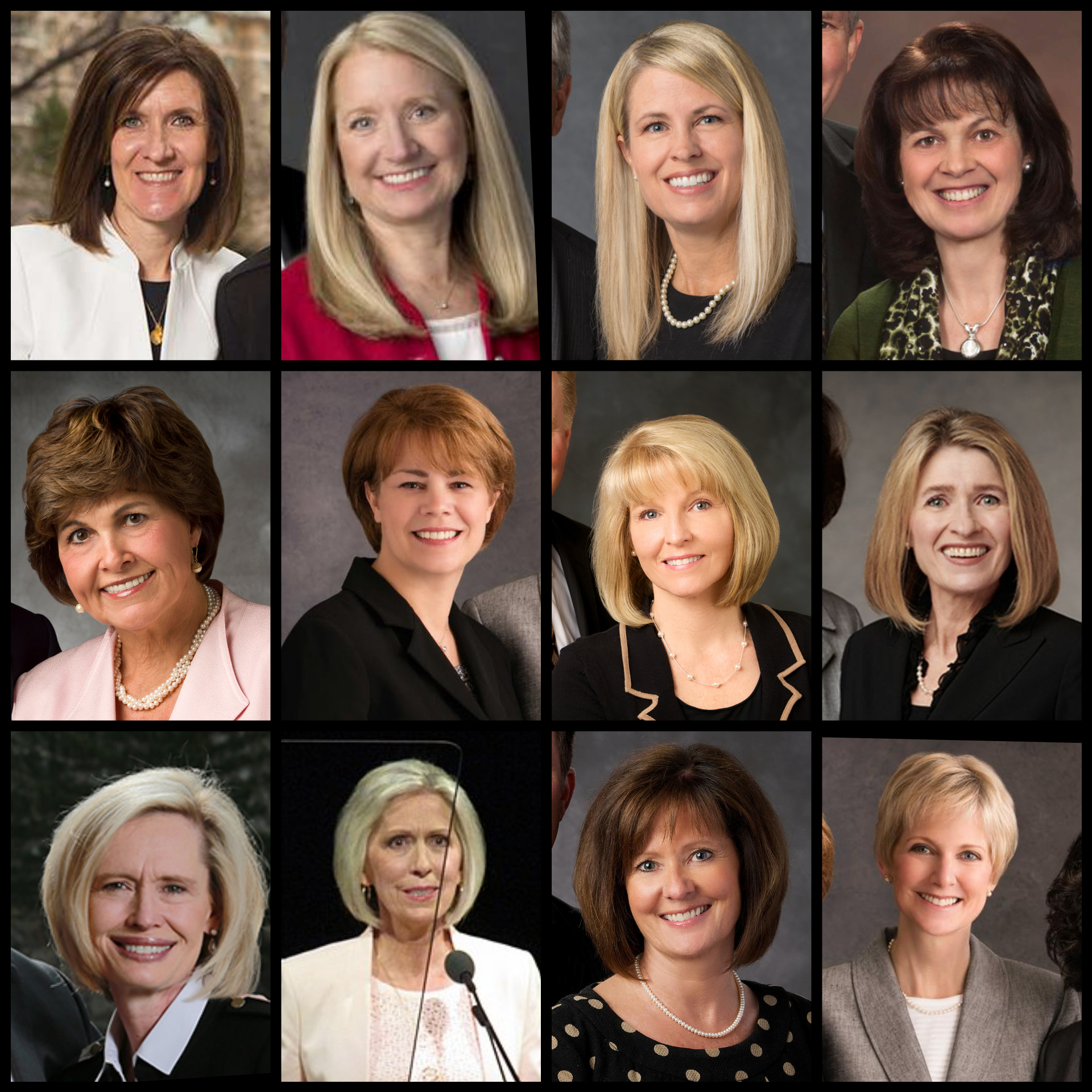
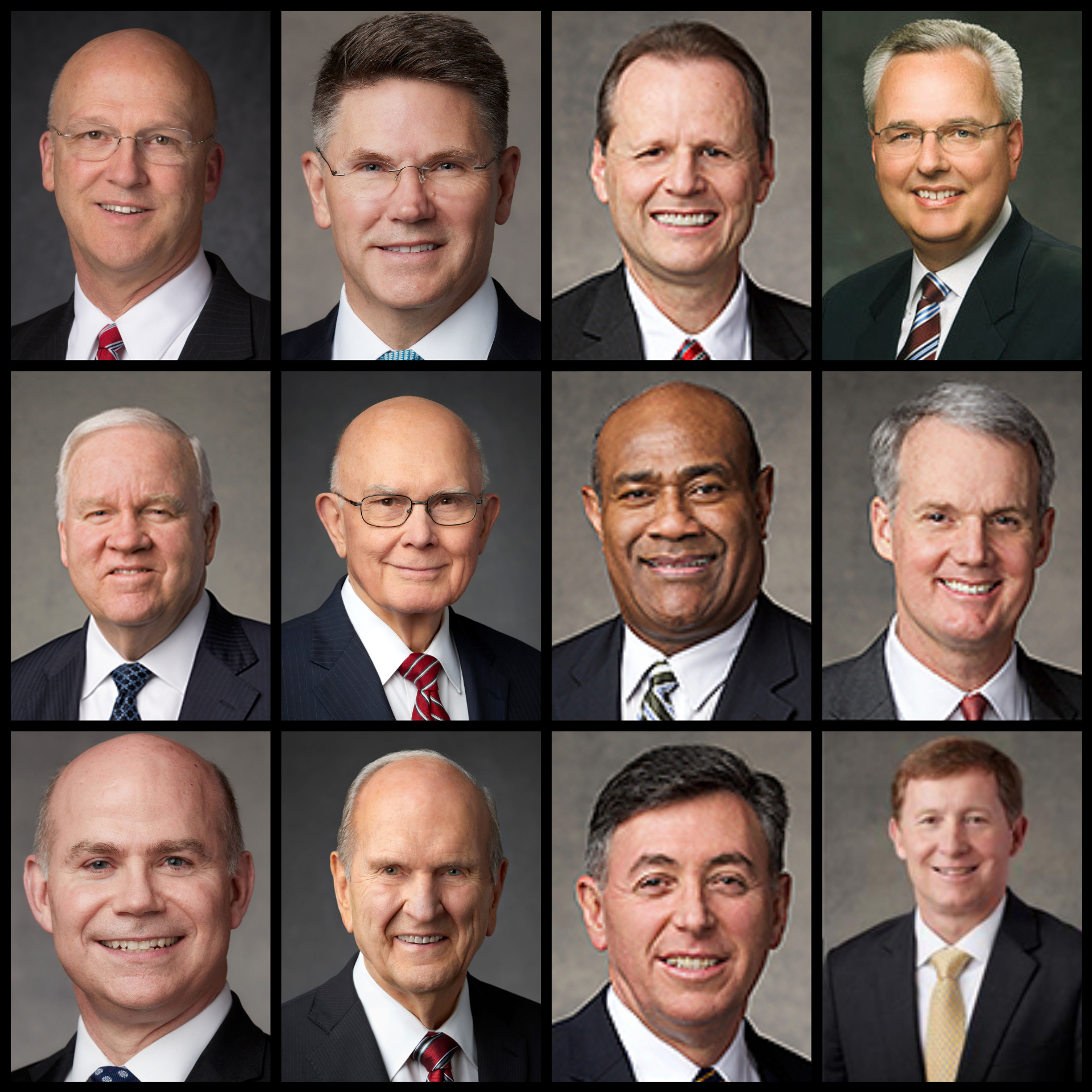
Recently I took my husband to a VIP Christmas event, and while eating hors d’oeuvres I noticed the General Young Women’s President was at the table directly next to ours. (Two years ago I brought him to the same event with me and ended up at the dessert table next to Dallin H. Oaks.)
My husband, an active member of the church, didn’t recognize who we were next to. While I was trying to casually eavesdrop, he kept talking to me. When we stepped away I told him we were next to Bonnie Cordon, and after telling him this he asked me to clarify which woman at the table was her.
Two years ago he’d recognized Dallin H. Oaks from across the room with no help. That night we stood next to one of the top three female leaders in the entire church and he didn’t even notice she was there.
As a woman raising daughters in this culture, I don’t think we should ignore this any longer. I’ve been assured for years that women have value and are respected as leaders, but the average LDS man doesn’t even know who the top one is when he’s standing five feet away from her.
He’s not alone. I’m sure there are millions of other Latter-day Saints who would also stand next to her without recognizing who she was. How could they really, when there are no positions for women at general leadership levels that last longer than five short years? On the contrary, there are many positions for men in leadership that last longer than five years, and male apostles are called for life. There is so much you can do in a lifetime appointment that you can’t do in a five year term, and one of those is become beloved and recognizable to the general membership.
The short tenure for female presidents also means that someone like the General Relief Society President is always newer and relatively inexperienced compared to the majority of male apostles, not to mention the fact that she lacks their lifetime experience of priesthood leadership. She can be released at any time by those presiding men if they become unhappy with the direction she chooses to take her organization in. (In stark contrast, apostles will only be removed from their position due to serious sin.) She will forever be the junior leader, trying to get up to speed and making sure her leadership decisions are palatable to the men in charge. She will have far fewer opportunities to speak in General Conference and this will result in fewer opportunities for her words to be quoted in Sunday School lessons, Sacrament Meeting talks, or lesson manuals.
This hurts us in so many ways we don’t even recognize. Little girls don’t have role models that look like them to learn about. Boys miss out on the opportunity to learn from women and look to them as wise authority figures. Primary rooms are plastered with pictures of apostles and prophets past and present, but rarely hang the female leaders of their own organization. Is a dead male prophet from a hundred years ago really more important to recognize than the image of the living women who run the primary in 2021? I sang songs in primary to memorize all the dead prophet’s names in order and can still sing them to this day – but if my life depended on it I couldn’t tell you one single general primary presidency member from any period of time that I was a child.
This process of ignoring female leadership continued into young adulthood as I took a class at BYU called “Teachings of the Living Prophets”. We spent a semester learning not only their teachings, but memorizing miniscule details about each current apostle and prophet (from their favorite sport to their careers to even how tall they were). Not once did we mention the name of a female leader in the church, and there was no equivalent class to take where you could learn women’s life stories. In all of my years attending Relief Society lessons, never do I recall discussing who a new general president was, despite there being five different women in that position since I was eighteen years old. If as women we don’t even talk about our female leaders, why would the men in the church (like my husband) be any more likely than we are to recognize them? It’s not their fault – it’s a broken system.
At the local level, I was once a counselor in my ward Young Women’s presidency. While I remember who the bishopric, stake president and prophet were at that time, I have no recollection of who the Stake Young Women’s President or General Young Women’s President were at the time. It was priesthood leaders who approved our budgets and activities, sat in on presidency meetings, and spoke at training meetings for us. At the general level, 95 percent of talks I heard were from men. While I do remember meeting with the Stake Young Women’s Presidency when we were first called, our interactions after that point became so nonexistent that I can no longer remember who any of them were. I lived in that same stake for eighteen years and yet I couldn’t have picked them out of a line up again within a year of having met them. (On the other hand, I still see those Bishopric counselors or Stake President every now and then around town and never fail to immediately recognize their faces.)
With all of this cultural baggage, is it any surprise that so few of us have been bothered historically by the complete lack of Heavenly Mother in our teachings, scripture and ongoing revelations? If the women who head the largest female organizations in the church are unknown to us, why would it be strange for the female half of deity to also be invisible? We may theoretically know that a general president or a Mother in Heaven exists – but we don’t know what she looks like, we don’t really communicate much with her, and we could walk right by her in public without recognizing who she was. Heavenly Father is a familiar constant in the lives of Latter-day Saints, but female deity and leadership remains firmly in the shadows.
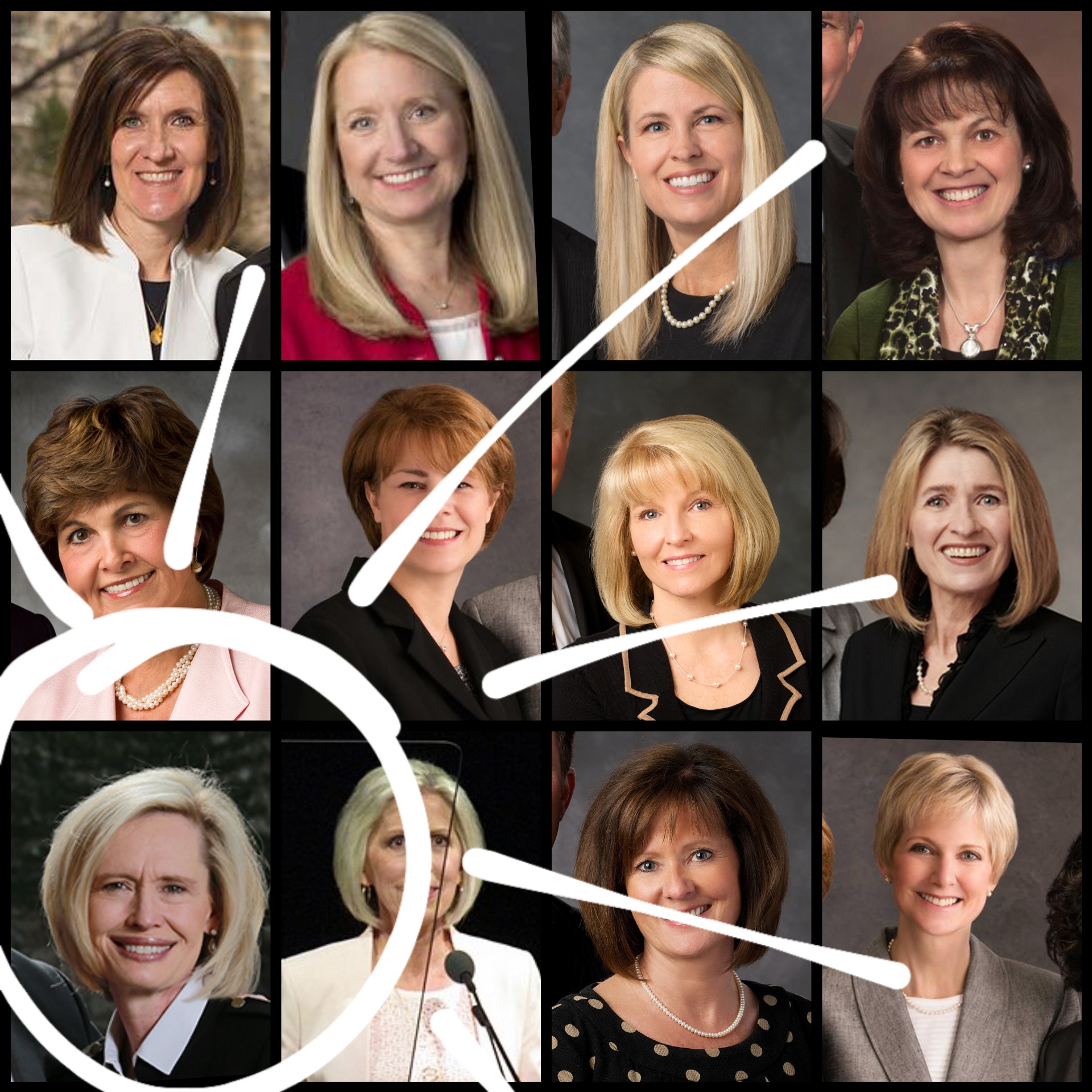
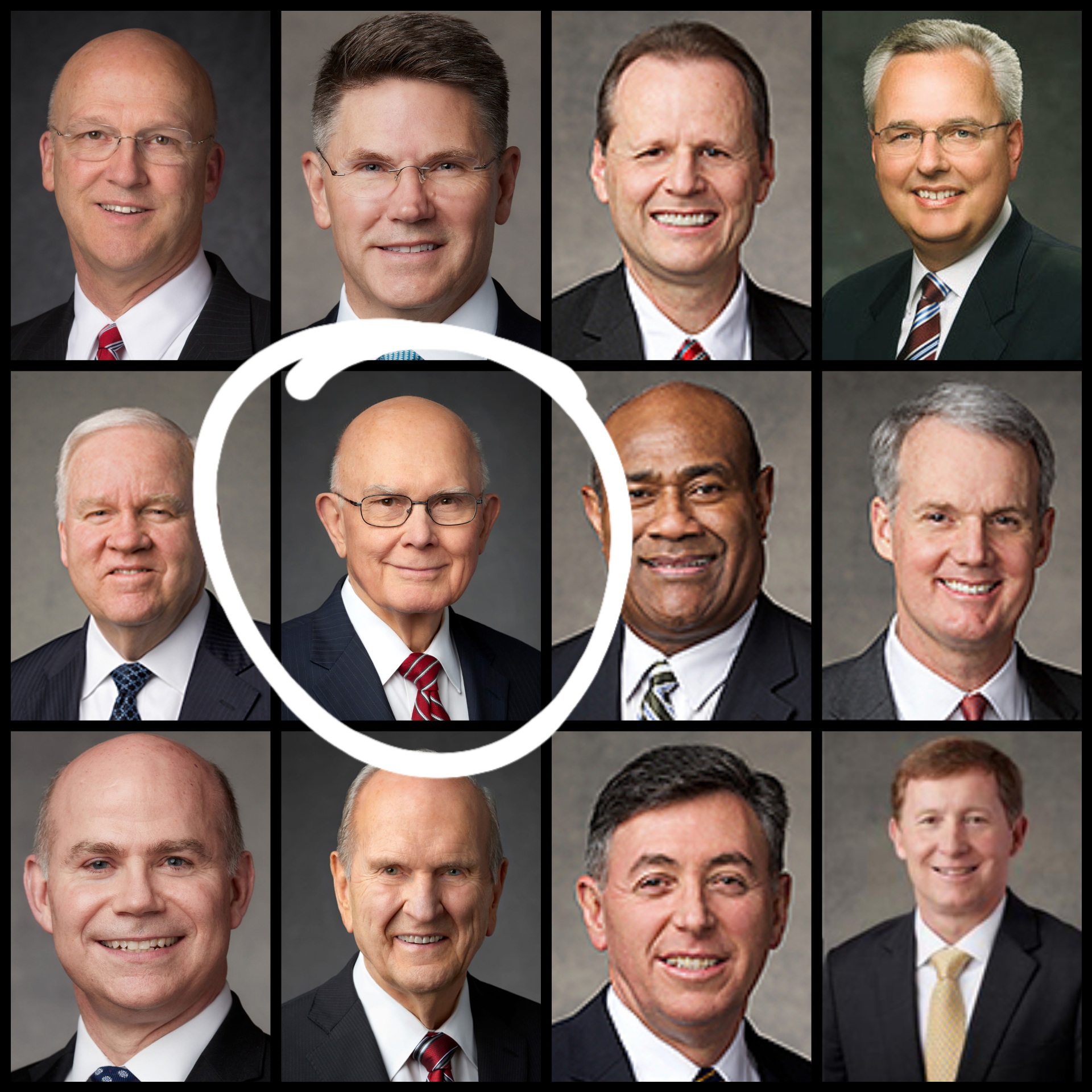


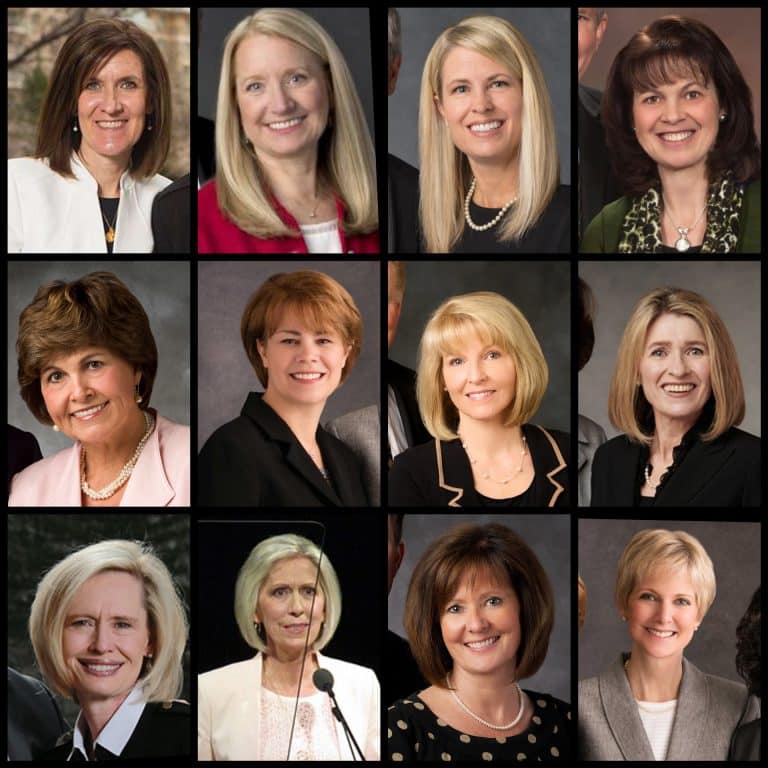



14 Responses
Amen, Abby. And thank you for articulating why this problem goes far beyond one man not recognizing one female leader, but is a systemic issue of diminishing female leaders and female power.
“As a woman raising daughters in this culture” was the sentence I said to myself that made me decide to leave. Hats off to you Sisters doing the hard work.
Years ago, I wanted to order a picture of the General Relief Society Presidency to put up in the RS room, but couldn’t find one listed. I then emailed asking where such a picture could be found and received the answer that no such picture existed that could be ordered. The only way was to go on the website and find a picture to download and print myself.
About ten years ago my son was teaching at BYUH and was with a group of students and faculty when Julie Beck walked by and he was the only one of the group who knew who she was.
Well said! I believe that true female equality will not exist in our church until we truly understand Heavenly Mother and Her eternal role. She is Elohim. God is not God with out Her because She IS God. We can’t afford to ignore half of Godhood. And for a population so focused on eternity, we can’t afford to ignore half of our population’s future. I’ll be no fertility cow for time and all eternity. There is so much more. What does my priestesshood look like??? I can only imagine that our prophets aren’t asking these questions…
Wow, just wow. I’ve never thought about any of these things very much, but this is something I’ll think about a lot from now on. I can’t believe we don’t even mention a new General Relief Society President in Relief Society. Or that I never noticed that we don’t talk about them. This is shifting my thinking so much. Thank you!
I wouldn’t have noticed these things myself a few years ago, either! It’s so hard to be aware of it when it’s what so many of us have grown up around and been told is normal. Once you start seeing sexism in the church however, it unfortunately becomes impossible to unsee and you’ll start seeing it everywhere. Yay for shifting our thinking patterns, but sorry for the stress it causes.
Beautifully brought up point. Something worth noting here, specifically that being, the General Women’s Leaders (Relief Society, Young Women, & Primary) are called only to five-year terms, much like bishops at the ward level.
I had an amazing stake president who — when he was called — called a stake Relief Society President, who served alongside him, and was released when he was. They worked together very effectively, and much good was accomplished with her team.
The downside of women in their general presidencies, is they tend to speak only once — maybe twice — in Conference during their term of service. The same can be said for 90%+ of Seventies who are serving a five-year call themselves, only make it to the Conference Center pulpit once, maybe twice themselves, thus making it truly equal in that regard.
There’s a great way to fix this, Tim. Have enough respect for the women leadership in this church to invite them to speak just as often as the General Authorities.
I do hear what you’re saying, but I still don’t think the three general female presidencies are comparable to the seventies. There’s way more representation in church affairs from the seventies than the women in leadership roles, just because of the sheer number of men involved there being so much higher. As a body of speakers, we hear far, far more frequently from seventies than we ever do from female leaders – even if we do hear the same amount from one individual woman as one individual man in those callings.
The problem to me is that the highest level of notoriety and recognition in the church a woman can achieve is the equivalent to just one male member of a quorum of the seventy. If there were 15 women who were appointed to lifetime callings, hung on the walls of primary rooms, and had entire college classes devoted to learning their teachings at BYU – then it would start to feel closer to truly equal. I think there’s a very long way to go to get there still.
But thanks for your comment, and I do think it’s a small step in the right direction to have a Stake Relief Society President called for an equal time as the Stake President. I hope more local leaders will decide that’s a great idea and implement it, too!
That Stake Relief Society President was amazing; she also rotated her counselors regularly in order to give them back to their families, as well as helping identify and recommend her potential successor.
When the stake president got his ‘upcoming release/reorganization’ letter, telling us he was being honorably released, and another was being afforded the privilege of service.
In our case the Stake Relief Society President was a delightful single (widowed) lady, with whom my every working experience was both a blessing and a delight.
Amen to every word of this. I actually pay a certain amount of attention to female leaders, and I couldn’t even pick out Bonnie Cordon. We have a deep systemic problem in the church. You are spot on regarding how damaging it is that women can only serve for 5 years now.
If it had been another female leader, I might’ve been just as oblivious to her as most other people were. I was trying to remember why I knew Bonnie Corden so easily – and I think it’s because she announced that sister missionaries could now wear pants and somehow her face and name stuck with me after that. That’s all it takes – just ONE public appearance and we’d all know who these women are before long.
Amen my sister! I have had this concern for a long time. I got your pop quiz right, and I have printed her picture and hung it in the YW room myself. I bring her name up and the general RS up as often as I can in things like RS or YW Jeopardy when I plan them. That was one of the most poignant moments for me, when we had some very Wise historian sisters in our ward. They knew tons and tons of church history information and obscure details, but the one detail nobody knew what was the current relief society president’s name. I know your name Jean B. Bingham!
There are none so lost as those that refuse to see. You obviously don’t really know who you are. Listen to the talk Camilla Kimball gave at conference in 1979. It’s buried but if you seek you will find. Then listen to the BYU devotional from April 14.1981. Then any of President Nelson’s talk about being the women He foresaw. President Kimball delivered a prophecy to the women of the church for our day and his wife delivered it. Let that sink your head. A women delivered a prophecy from the pulpit and no one noticed. Like I said none so blind.